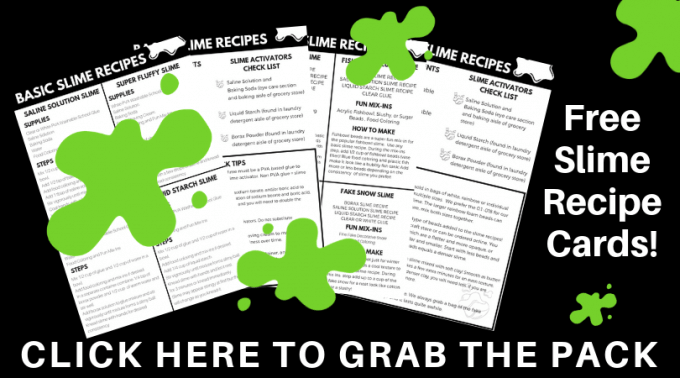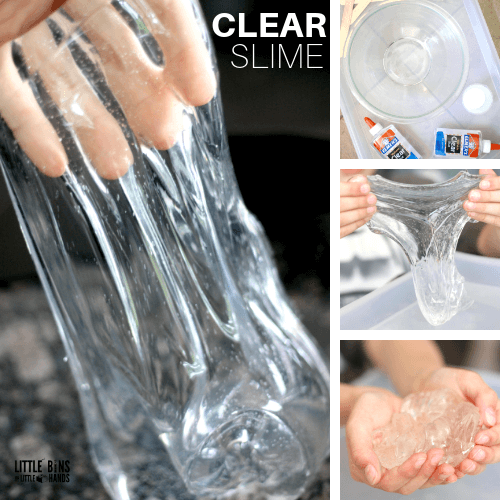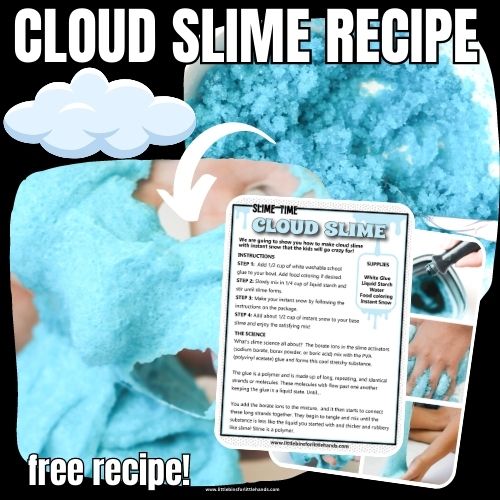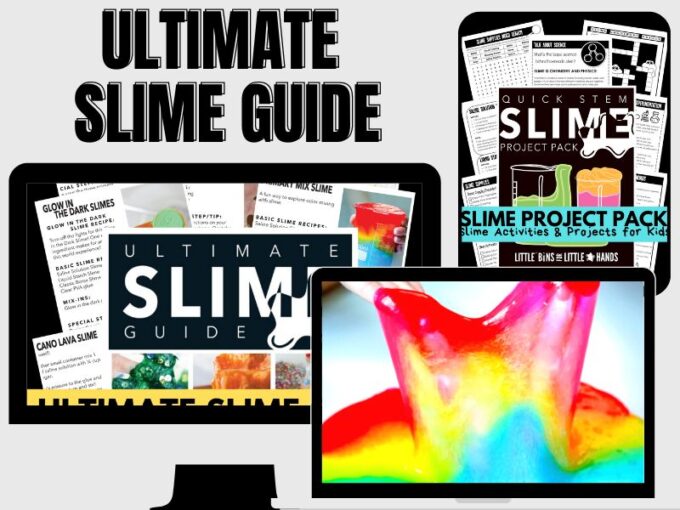Can you make slime with paint? You betcha! We have tons of amazing slime recipes for you to make, including this colorful paint slime. Let’s check out how to make slime with glue and paint today! A perfect combo for richly colored slime you can swirl for a glamorous slime effect.

Basic Slime Recipes
Our easy, “how to make” slime recipes show you how to master slime in 5 minutes or less! We have spent years tinkering with our favorite basic slime recipes to make sure you can make the BEST slime every time!
We believe slime shouldn’t be disappointing or frustrating! That’s why we want to take the guesswork out of making slime!
- Discover the best slime ingredients and get the right slime supplies the first time!
- Make easy slime recipes that really work!
- Achieve awesome slimy consistency the kids’ love!
Which Slime Recipe To Use?
We have several basic slime recipes that can all be used for this paint slime recipe. You decide which one works best for you depending on what slime activator you want to use. This allows for some flexibility depending on where you live in the world! Not everyone has access to the same ingredients!
Each of the basic slime recipes below have the full step by step photos, directions, and even videos to help you along the way!
In the recipe below, we used our Liquid starch slime recipe. Only 3 ingredients, liquid starch, water and glue, and you have slime in no time is my motto!
How To Make Paint Slime
Let’s get started making this vibrantly colored slime by gathering all the right ingredients for slime we need to have on hand!
TIP: You can make several batches of slime in a variety of colors for this activity! It’s so fun to swirl them together. Do keep in mind that eventually all the colors will mix.
Supplies:
The recipe below makes one batch of homemade slime…
- 1/2 cup of White Washable School Glue
- 1/2 cup of water
- 1/4 cup of Liquid Starch
- Acrylic Paint (food coloring will work fine too but I love the color of the paint)
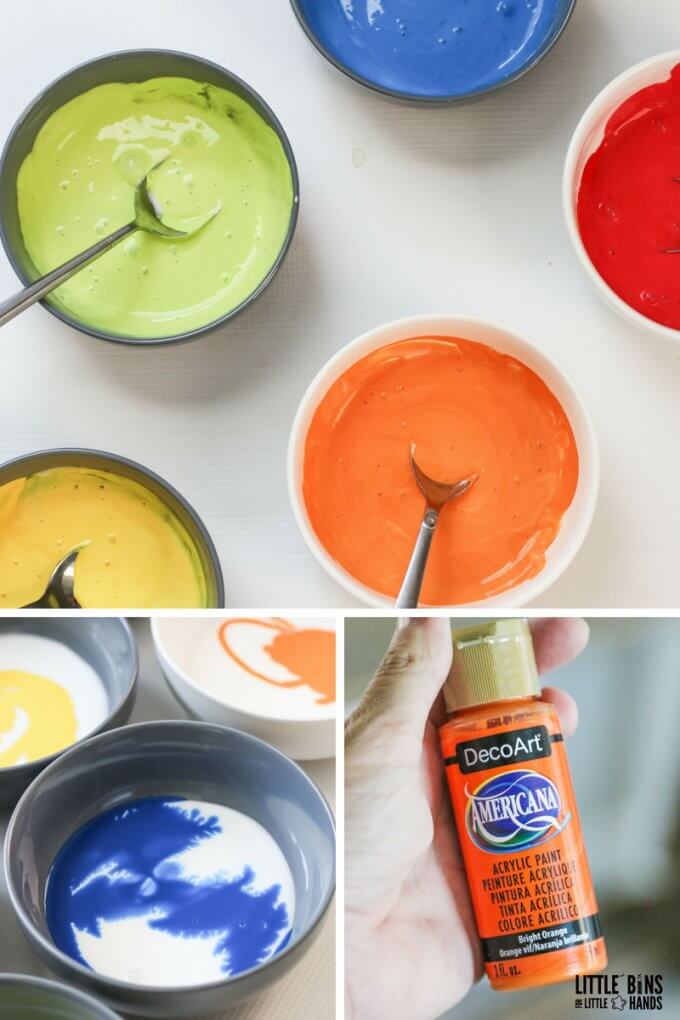
Instructions:
STEP 1. Start by mixing glue and water in a bowl until combined.
STEP 2. Next add paint to your desired color!
STEP 3. Time for the slime activator! Slowly add in the liquid starch and mix as you go.
TIP: If your paint slime still feels too sticky, you need more liquid starch. Be careful, and add just a little at a time until you get the consistency you want. If you add too much liquid starch your slime will become stiff and rubbery. You can always add but you can’t take away.
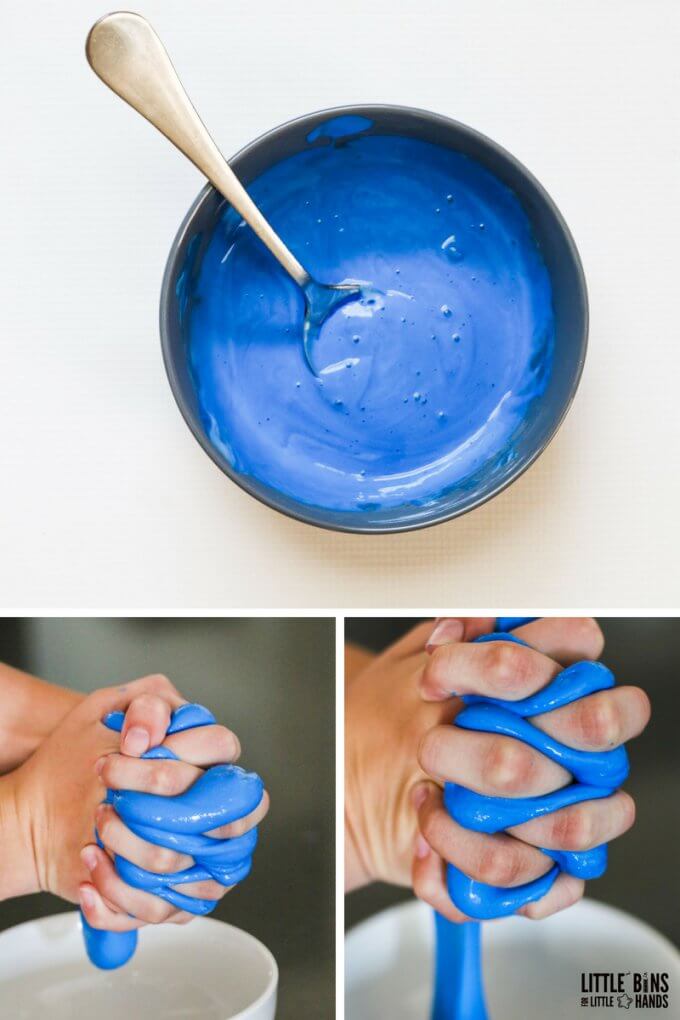
Knead the slime right in the bowl or pick it up and knead it. We usually start in the bowl and then pick it up. Kneading the slime will improve the consistency as well as reduce the stickiness.
Once you have each color made, you can get busy swirling them together. I like to stretch them out in strips next to each other and let them slowly combine. Pick up from one end, and let gravity help the swirl form!
Squish and squeeze!
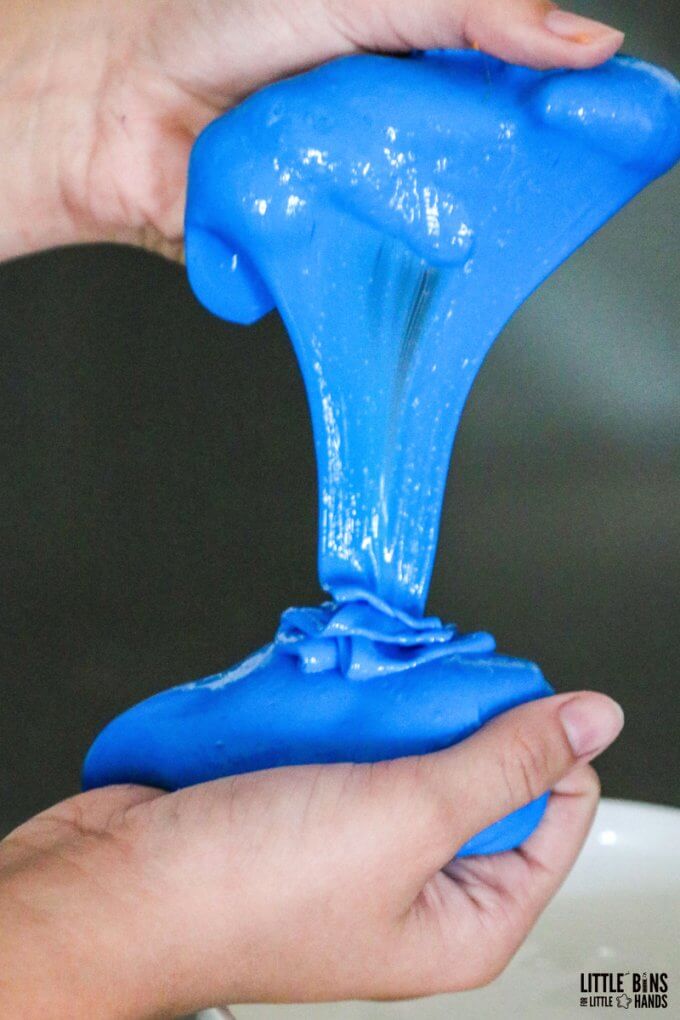
The Science of Slime
We always like to include a bit of homemade slime science around here. Slime really does make for an excellent chemistry demonstration and kids love it too! Mixtures, substances, polymers, cross linking, states of matter, elasticity, and viscosity are just a few of the science concepts that can be explored with homemade slime!
What’s the science behind the slime? The borate ions in the slime activators (sodium borate, borax powder, or boric acid) mix with the PVA (polyvinyl-acetate) glue and forms this cool stretchy substance. This is called cross linking!
The glue is a polymer and is made up of long, repeating, and identical strands or molecules. These molecules with flow past one another keeping the glue in a liquid state. Until…
When you add the borate ions to the mixture, it starts to connect these long strands together. They begin to tangle and mix until the substance is less like the liquid you started with and thicker and rubberier like slime!
Picture the difference between wet spaghetti and leftover spaghetti the next day. As the slime forms the tangled molecule strands are much like the clump of spaghetti!
Is slime a liquid or solid? We call it a non-Newtonian fluid because it’s a little bit of both!
Read more about slime science here!
Get your FREE printable slime recipe cards!
Helpful Slime Making Resources
These are the best resources to look through before, during, and after making your awesome paint slime!
Grab the Ultimate Slime Recipe Bundle
All the best homemade slime recipes in one place with plenty of fantastic extras!
What’s Included:
- The Ultimate Slime Guide contains all the specialty recipes you or your kids want to make! You’ll find all the best tips, tricks, hints, and slime-y info in almost 100 pages!
- The Ultimate Slime Holiday Guide covers all the best holidays and seasons with special themes and slime-y projects!
- The Ultimate Borax-FREE and Taste-Safe Slime Guide shows you how to make all the best borax-free, taste-safe, and non-toxic slimes kids love, such as marshmallow slime. These recipes do not use chemical activators such as saline solution, liquid starch, or borax powder, making them truly borax-free.
- The Ultimate Slime Coloring Book is an easy-to-print coloring book kids will love! Color and design your favorite slimes!
- The Slime Starter Guide is a fact-filled information guide with everything you need to know to make the best slime ever!
- Slime Science Project Pack helps you turn slime-making into a science lesson!


